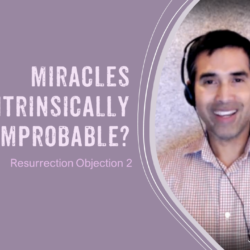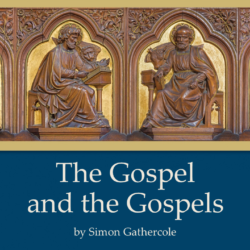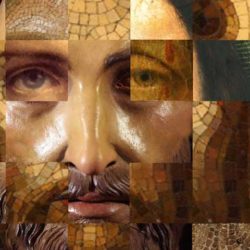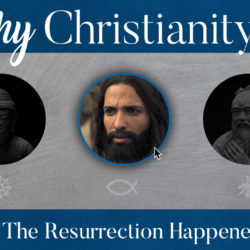Aaron Shelenberger who studied under Mike Licona at Southern Evangelical Seminary in Charlotte, North Carolina, shares about his research on the historicity of the resurrection. In particular, his thesis tackled three main objections brought forth by popular author and anti-Christian Bart Ehrman. Now, I realize this episode and the next two that follow are a tad technical, so if that’s not your jam, then you may want to skip them. However, what I’ve noticed in the past is that our most technical episodes tend to get lots of downloads. In our conversation today we discuss the importance of resurrection and how Ehrman’s attack on the reliability of the Gospels fails to undermine the case for the resurrection. Also, I bring up Licona’s somewhat controversial book, Why Are There Differences in the Gospels and get Shelenberger’s take on it.
Listen to this episode on Spotify or Apple Podcasts
Here is Shelenberger’s thesis for your consideration.
 Loading...
Loading...
—— Links ——
- Follow Aaron Shelenberger on his YouTube channel: Life and Beyond and on his blog: Abandoning the Trinity
- See Mike Licona’s Why Are There Differences Between the Gospels?
- Check out Shelenberger’s interview on the Trinities podcast (part 2 here)
- More information about Family Camp here.
- Support Restitutio by donating here
- Designate Restitutio as your charity of choice for Amazon purchases
- Join our Restitutio Facebook Group and follow us on Twitter @RestitutioSF
- Leave a voice message via SpeakPipe with questions or comments and we may play them out on the air
- Intro music: Good Vibes by MBB Attribution-ShareAlike 3.0 Unported (CC BY-SA 3.0) Free Download / Stream: Music promoted by Audio Library.
- Who is Sean Finnegan? Read his bio here.







Another very interesting discussion, Sean.
Here’s my comment :
The resurrection of Jesus would have occurred in a ‘soma pneumatikon’ (1 Corinthians 15:44). ‘Pneumatikon’ can mean ‘supernatural’ – but one of the few New Testament translators that had the boldness to translate ‘soma pneumatikon’ as ‘supernatural body’ was Dr. George Woosung Wade (‘Documents of the New Testament’, 1934). A supernatural body would presumably have capabilities that could combine the attributes of an invisible spirit (in passing through physical walls), but also (at times) manifest physical solidity (Luke 24:35-37). In addition to this, there may possibly also have been some partial visionary element involved in the perceiving of Christ’s resurrection body. Paul definitely ‘saw the Lord’ (1 Corinthians 9:1) – as did the other Apostles – but Paul’s perception of Christ’s resurrection body contained some visionary element (Acts 26:19; cf. also, the incidents recorded in 2 Kings 6:17, and Numbers 22:22-31). Christ’s resurrected body had ontological existence, but the human perception of His supernatural body (‘soma pneumatikon’) may possibly have required a Divinely granted visionary element.
Near the end of your discussion, you said that belief in the accuracy of the Bible was secondary. My question is – secondary to what? Are you are you saying that historical evidence is more important than Biblical evidence of the resurrection and everything else that the Bible teaches?
Maybe the general sense, Kym, was that the Bible is a reliable human record of Divine events ?